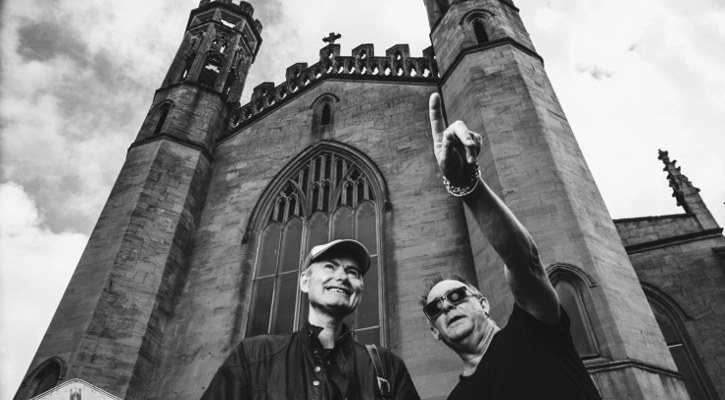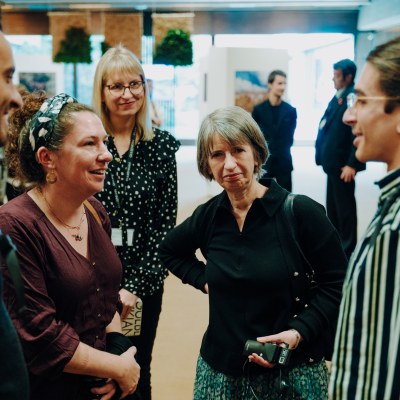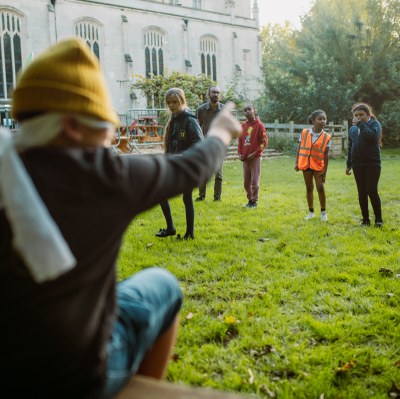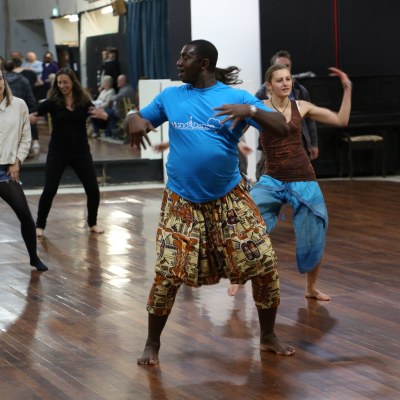Becoming Legends in Our Own Time: Fighting for Community Ownership

John Parish & Adrian Utley supporting Trinity's #Notes4Notes campaign, 2013
The battle over who gets a say about the land under our feet is a tale as age-old as Robin Hood.
As the housing crisis shows no sign of letting up, this can mask the much wider picture of what it truly means to build sustainable, thriving neighbourhoods where people want to carve out lives. Despite the government’s stated commitment to community empowerment, the closure of the Community Ownership Fund (COF) marks a significant setback leaving the future of community-led asset ownership uncertain.
Even with schemes like COF, the task of taking on a building is one with many obstacles. In England’s fight for community spaces, the Asset of Community Value (ACV) system, while noble in its intention, offers little protection against the weight of market forces. Unlike Scotland’s Community Right to Buy, which grants legal power to force a sale to qualifying community interest groups, England’s system merely offers a temporary pause on commercial disposal, with no obligation placed on asset owners to prioritise community buyers.
This leaves communities having to balance professionalism needed to lever required funds whilst simultaneously growing noisy public campaigns to put of other buyers. If they’re in no rush to sell, the owner will simply wait for the six-month moratorium to lapse before proceeding with sale to the highest bidder, as with Coexist’s campaign to save Hamilton House. Even where groups manage to raise substantial funds and deliver successful public campaign, efforts can be swept aside in a heartbeat by a developer with deeper pockets.
There is marginally greater hope when a building is owned by a Local Authority, where campaigners can cite continued social value. However, securing a community asset transfer can be challenging in the current context with councils under pressure to balance deficit budgets. The temptation of commercial disposal can be hard to resist.
Keeping buildings in public ownership is one of the biggest challenges. Many councils are eager for a quick exit from liabilities such as their expensive portfolio of rapidly dilapidating buildings. By the time an asset reaches a state of severe disrepair, disposal becomes the only logical option; a short-term fix that plugs a budget gap at the expense of long-term social, economic, and health benefits.
People think of the legend of Robin Hood as a story of outlaws robbing the rich, but at its core, it is a tale of defiance against this type of land-based power. The struggle to protect or reclaim what belongs to the people – whether it’s indigenous land reclamation struggles against tech giants mining for precious minerals, tenant unions resisting evictions and rent hikes, community land trusts securing affordable housing, local campaigns fighting to save a building on their doorstep, or even Greenland telling Trump “no means no” – is a narrative deeply rooted in our human condition, local to global.
In this latest telling of the story, we’re not just saving buildings. We’re saving ourselves. Every step we take to save a space is an act of political defiance, challenging the systems that concentrate land and wealth in fewer hands. Community management of buildings unlocks external funding, supports local well-being, and keeps spaces in public hands. It is in these everyday battles to save our spaces that the greatest transformations are forged, proving that resilience, solidarity, and vision to reshape a future in which communities work together to solve some of our shared problems.
Like Robin Hood’s battle against feudal land grabs, the movement for community ownership is about more than individual buildings, it’s about reshaping an entire system. If we only defend one asset at a time, we won’t keep up with the pace of change and we’ll fail to address the structural inequality that means some the odds are stacked against some more than others. Instead, we must challenge the structures that keep land and power concentrated among the few.
Rather than accepting when our decision-makers tell us the cupboards are bare, we need to all be asking more questions of our elected representatives to demand greater transparency around how we’re making best us of the resources we do have. The question isn’t just: How can we save this building? It’s: How can we reclaim control over the places that shape our lives, for the good of all of us?
Opinion piece written by Emma Harvey, CEO
How to help
Register a building as an Asset of Community Value (ACV); this gives your community the right to bid for it if it's put up for sale, helping to protect important local spaces from unwanted development or loss.
Read about our Roots of Resilience campaign; show your support by contacting your Local Councillor to tell them about the importance of civic and cultural spaces in your neighbourhood.
Nominate a building to be listed as a heritage asset; care about the future of a historic place you know and love? Anyone can recommend a building, site, monument, designed landscape, battlefield or wreck site for inclusion on the National Heritage List for England (NHLE).
Write to your MP to call for a UK-wide "Community Right to Buy" to enable communities to take ownership of local assets, along with other measures like a new flexible Community Ownership Fund and support for community businesses to help combat structural inequity in asset management.
...and don't forget to VOTE 1st May! The West of England Mayor has the power to shape investment in civic and cultural infrastructure across the region. This election is a crucial chance to ensure decisions are made that benefit all of us. Don't forget to use your power to vote and make sure you ask your candidates what will they do to ensure investment reaches local communities so they can take on and develop vital community assets.
Resources
Ask your local Councillor:
- How is the council prioritizsng and funding investment in community assets, and what opportunities exist for community partnerships or asset transfers?
- Are there underused or surplus council properties that could be repurposed for community benefit, and what funding mechanisms (e.g., CIL, Section 106) can be utlised to better support this model?
Ask your local MP:
- Will the government introduce stronger legal protections, such as a Right to Buy or compulsory purchase powers for communities, to prevent vital spaces from being lost to private development?
- Will the government commit to establishing a dedicated, long-term funding programme like Scotland’s Land Fund, to better enable communities to protect the assets that matter to them?
Links:
Locality - Provides expert guidance and resources for community-led organizations to establish and sustain community assets.
My Community - Provides tools and advice for communities to take ownership of local assets and influence local decision-making.
Platform Places - Assists communities in repurposing vacant or underused buildings into vibrant community spaces.
Shared Assets - Offers support for managing land and buildings as sustainable community resources.
Stir to Action - Delivers training and workshops focused on social enterprise and community-led development.
The Plunkett Foundation - Supports rural communities in setting up and running community-owned businesses, including buildings.
Voscur - Offers support services for voluntary and community groups in Bristol, including guidance on managing community buildings.
#WECA #WestOfEngland #MyVoteMyVoice #UseYourVote
#CommunityPower #SaveOurSpaces #SoldFromUnderYou








